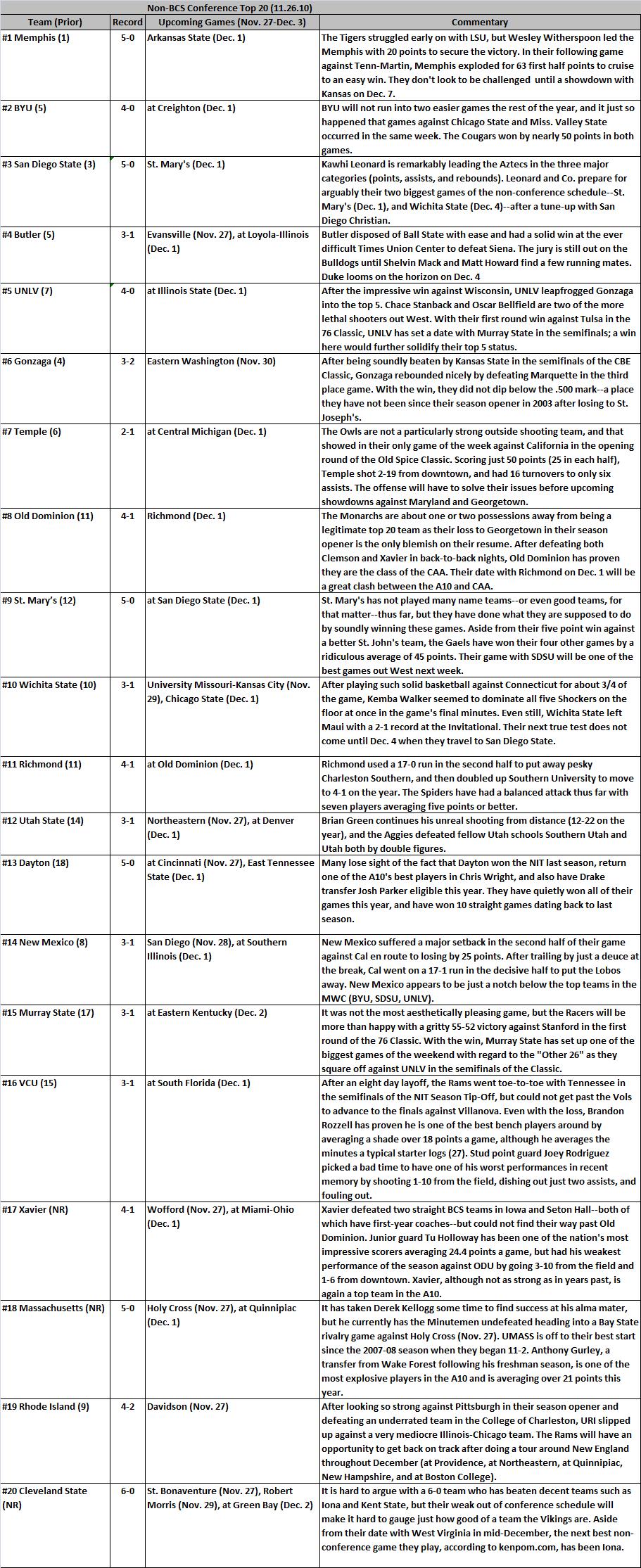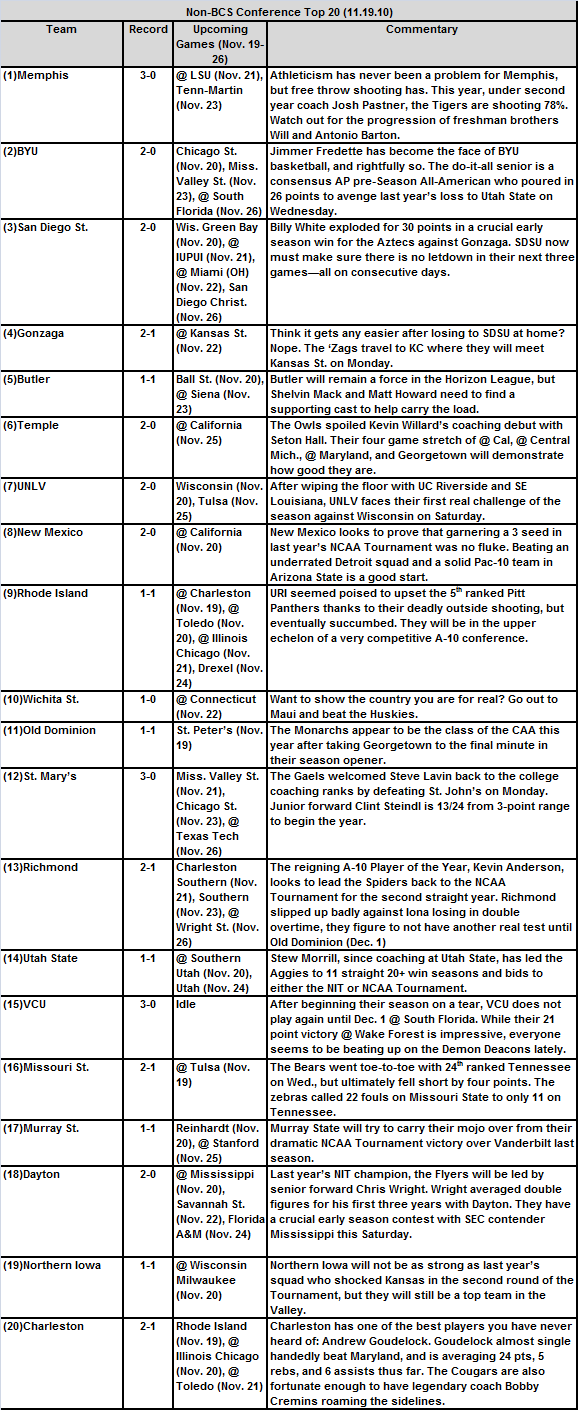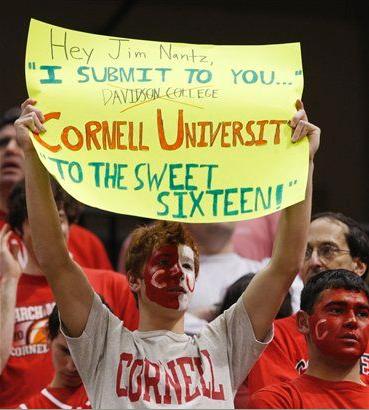The Other 26: Week Four
Posted by rtmsf on December 10th, 2010Kevin Doyle is an RTC contributor. For an introduction to this series, please click here.
Introduction
As every week of the college basketball season evaporates right before our eyes—like a double-digit lead is whittled down to a single possession in a matter of minutes—more and more stories subsequently develop. To draw a comparison to mathematics for you brainiacs out there, this is the classic inverse relationship. As “X”—the number of weeks in the season—decreases, “Y”—the amount of stories—increases. Think about it, when are there the most stories surrounding college basketball? At the end of the year during the NCAA Tournament, of course. From the moment Selection Sunday rolls around all the way to that final, depressing buzzer in the NCAA Championship game rings signaling an end to another season, it seems as if college hoops are being discussed 24/7. Just this past week, there were several major developments in the world of the Other 26:
- The top three teams in the Mountain West—SDSU, BYU, and UNLV—are a combined 27-0.
- Butler and Gonzaga have identical, albeit very mediocre, records: 4-4.
- Temple defeated Maryland and Georgetown, and in the process Fran Dunphy picked up his 400th win.
- Cleveland State has the most victories in the country with 11.
- One of the biggest recruits in the nation—Adjehi Baru—signed with the College of Charleston over a couple of ACC schools. Bobby Cremins really has something brewing down there in South Carolina. Could Charleston be the next Davidson? Both schools, after all, hail from the Southern Conference.
- Illinois and Oakland were getting in touch with their feminine side by using a women’s basketball for the first seven minutes of the first half of their game.
The inverse relationship will not fail as the season progresses. I promise.
Tidbits from the Rankings:















































